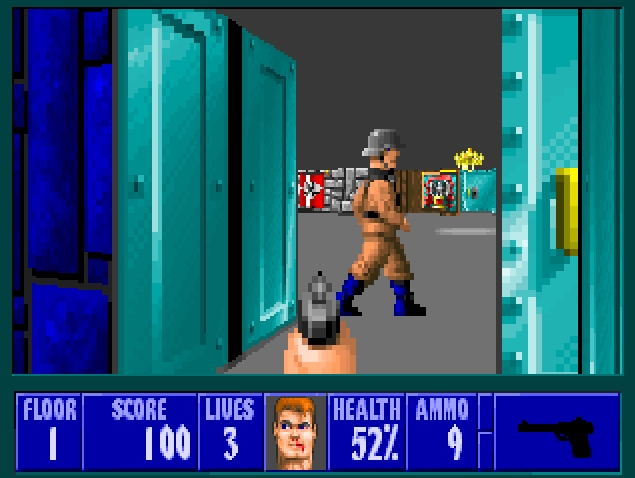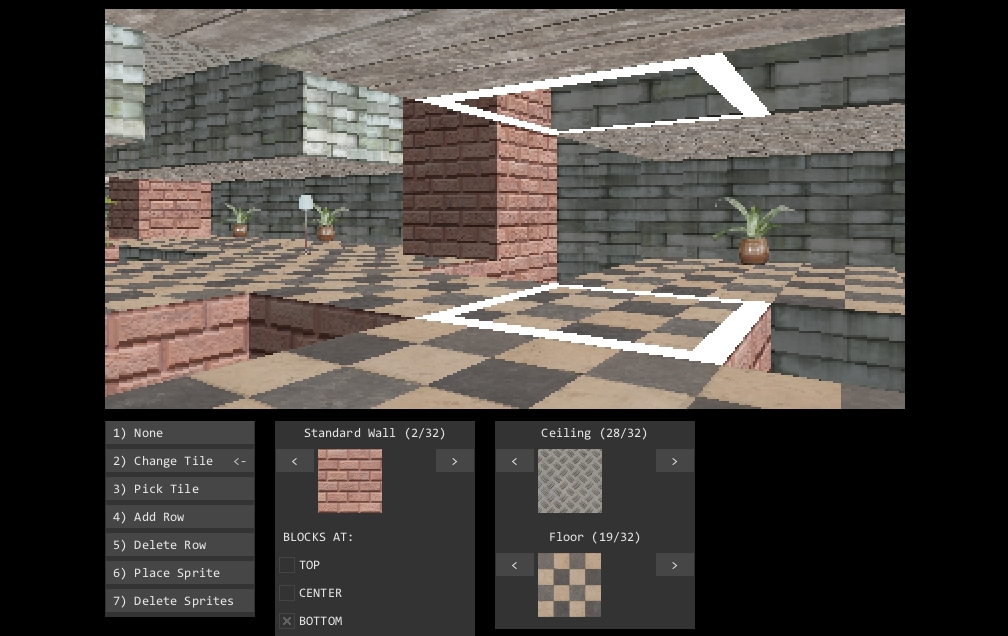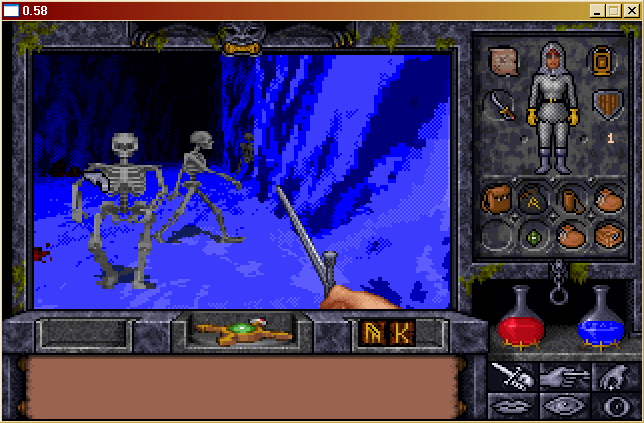I participated in a Kajam, which is an regular-ish game jam hosted on alakajam.com with different hosts. If you remember classic Ludum Dare, this is the equivalent to a Mini Ludum Dare, where hard rules like ‘everything must be from scratch’ or the weekend time-frame are much more relaxed. The theme of this particular Kajam, running the whole January 2021 and hosted by toasty, was “make a game based on ray casting”, and one could interpret this any way possible, but of course the basic idea is to get your hands dirty and actually try to create a ray-caster. If you don’t know what that is, the most prominent example for a ray-caster is Wolfenstein3D from 1991, back when there was no 3D hardware for PCs.

My entry for the jam became a ray-casting engine with a very rudimentary level editor, or a sandbox if you’re generous. I had some gameplay ideas, but as I could not work fulltime on the project, and most of my experiments didn’t result in anything playable, the state for now is that there’s just no game. Yet for me, creating a ray-caster, based on tutorials on lodev.org, was a feat in itself, so I still wanted to submit it. With only one weekend left I decided to make it a “playful” level editor - meaning the editing (placing walls, changing textures, resizing the rooms, etc.) happens inside the “game” in first-person perspective. While this is actually not really an efficient way to create a level, it definitely makes it a bit more interesting and fun.

I utilized haxe, Kha and zui for this project. The first two I already tried for another software rendering project - the “Ray Tracing in a weekend” version I did 2 years ago. So I knew Kha could be used to just draw some pixels (probably grossly under-using this framework), and I like how it supports virtually every platform. The latter was a life-saver for me because the web version turned out to be not ‘compatible’ with my input method (as locking the mouse cursor always is a risk in browsers). But the Windows build turned out fine, after I had to fix a surprising bug which switched the textures’ red and blue channels. Zui, the go-to solution for tool GUIs for Kha, was relatively easy to understand (after quite some tinkering with the elements), but unfortunately it doesn’t feel as powerful and flexible as the Immediate GUI I know from Unity. Still, it was much better than nothing, and helped me to add edit functionality quite easily.

Features of my ray-casting “engine” are, for now:
- textured walls, floors and ceilings
- 3(!) block layers (bottom, center, top)
- sprites (for the center layer only)
- more or less correct display of infinite wrapping levels
- collision with walls
It also supports different wall textures for each block side, but this feature isn't shown in this prototype unfortunately, because I had no time to add an editor mode for this. As I have a lot of overdrawing (mostly thanks to the top and bottom block layers) the performance is worse than it could be, and with infinite wrapping levels fps get low very fast as soon as you have a bit more sprites visible at once. Still, it’s good enough for me, because I do not target DOS machines like some of the more impressive entries of the Kajam do.
(YouTube videos try to set cookies and contact Third Party servers!)
Most pictures (textures for the walls, and five of the seven sprites) were pulled from textures.com. This is also only rudimentary, as there is no game; but I expected to use photos for the environment from the beginning anyway, for whatever game I would do; I am still inspired by Ultima Underworld II in this regard.

While my use-case for the engine is not necessarily a dungeon crawler, I definitely would like to repurpose it for another jam game in the future. The biggest feature missing right now is level saving and loading, which I should add in any case. Other than that, the gameplay will probably decide what the direction is going to be.
If you want to try the Alakajam version of rc-test (I didn't have any use for a better name), don’t forget to read the control instructions on the entry page. And check out voxel’s excellent RAYKA!